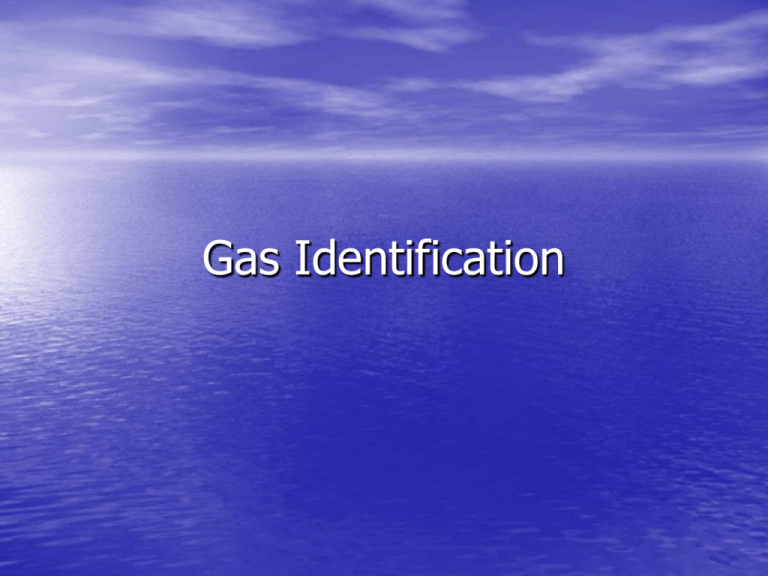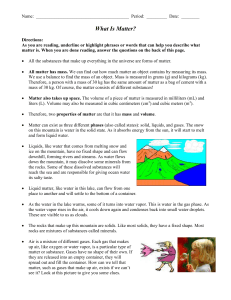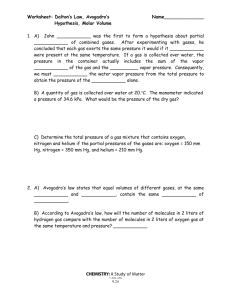Gas Identification
advertisement

Gas Identification Reactivity • Flame tests • Hydrogen- POPS in the presence of a flame • Helium- puts flame out • Carbon Dioxide- puts flame out • Nitrogen- Puts flame out • Oxygen- reignites flame if it is smoldering • Methane- produces a larger flame (burns) What makes gases float • Gases float in air if their density is less than that of air, and sink if it is more. • Air is composed of 78% Nitrogen (N2), 21 % Oxygen (O2) and 1 % Argon (Ar); with other gases in trace amounts. • Density = mass/volume • One mole of ANY gas is 22.4 L • The mass of one mole is the molar mass. Gases that float • Very few gases are actually lighter than air and do float. • Air has a density of 1.28 g/L (28.672g/22.4L) • Hydrogen (H2) is the least dense gas at .09 g/L (2.016 g/22.4 L) • Helium (He) is .179 g/L (4.008 g /22.4 L) • Methane (CH4) is .716 g/L (16.042 g/22.4 L) • Ammonia (NH3) is .760 g/L (17.032 g/22.4 L) Gases that sink • Most gases are actually more dense than air and will sink • Carbon Dioxide, Oxygen, Ozone, krypton, xenon, radon, and butane. • Propane heated houses can possibly blow up if a propane leak fills up the basement of the house, that eventually ignites. • If propane was less dense it would float to the attic which almost always has a vent in it. • Radon is a radioactive gas that also collects in the basement of houses if there is a source. Colored Gas • If you see one… • Run they are all poisonous!! • Fluorine- A VERY pale yellow color which is difficult to see. It is the most reactive nonmetal on the planet and is incredibly toxic. • Chlorine- A green gas which will react nearly everything and is good at killing people. • Bromine- A vapor that is very intense redorange color. It is pretty, but will kill you. • Nitrogen Dioxide- A brown gas which is VERY good at killing people. • Iodine- A pale violet color, inhaling the vapor can cause lung damage and could kill you. Gases and Vapors • Vapors are gases! • A vapor is a substance that is normally a solid or a liquid at the current conditions (temperature and pressure), however, it is kind of dissolved in the air. • Water that has evaporated is a vapor, rubbing alcohol readily evaporates into a vapor, so do bromine and iodine Water Vapor • Water Vapor is invisible to the human eye. • You can see steam because some tiny droplets of the water are condensing (turning back into liquid water) and forming a mini-cloud. • You can see your breath when it is cold for the same reason Distinct Odor • Hydrogen Sulfide- smells like rotten eggs • Ammonia • Ozone • Mercaptan- odor in natural gas. Natural gas by itself is odorless, this is added so you know if there is a leak.






